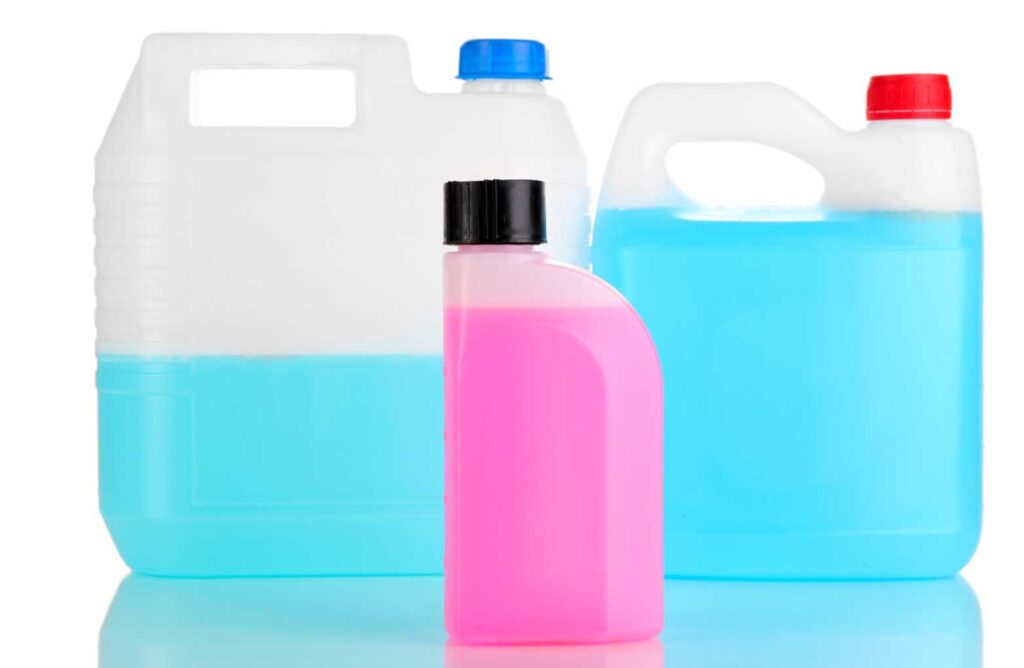How Should Cleaning Chemicals Be Stored?

The hazards of cleaning chemicals are easy to overlook and mismanage due to their commonplace use in our personal and professional lives. You don’t have to be in the cleaning industry to be impacted by hazardous cleaning chemicals in your workplace. Their handling and storage must be planned for and organised to ensure the safety of your staff and work environment.
Ecospill has experience in helping businesses determine appropriate storage methods for cleaning chemicals. In this article, we help you answer “how should cleaning chemicals be stored?” in a way specific to your workplace and offer tips for optimal storage.
How Should Cleaning Chemicals be Stored?
You may have considered how to store more obviously hazardous chemicals in your workplace, but how should cleaning chemicals be stored? You should store cleaning chemicals in an organised and structured method so that there’s a uniform process that enhances safety in your workplace.
Below we provide a program to enhance storage and then provide tips for the safe storage of cleaning chemicals:
Create a cleaning chemical storage program
Before you begin implementing safe storage, you should create a programme to ensure you apply the correct handling and storage of cleaning chemicals. Complete these tasks to develop a comprehensive program:
1. Clearly label containers
One of the essential aspects of storing cleaning chemicals is ensuring they’re clearly labelled so staff can access the correct chemical. Once labelled correctly, they can be placed in a dedicated space to ensure your staff use cleaning chemicals correctly. It’s especially dangerous when your employees mistake high-risk chemicals for low-risk chemicals. It can be a good idea to categorise the containers to reflect their level of hazard. For example, you could use the following categorisation:
- Caution: the chemical should be used carefully but is relatively safe.
- Warning: the chemical is moderately toxic.
- Danger: the chemical is highly toxic and may cause permanent damage to skin and eyes.
2. Use original containers
Keep cleaning chemicals in the containers they come in, as pouring them into new containers can be a dangerous operation and increases the chances of incorrect labelling. Chemicals can react to different materials, and mixing them into new containers can cause an adverse reaction.
3. Train your staff
Training your staff in the established storage program and teaching them how to store cleaning chemicals properly is critical to creating a safe work environment. Many cleaning chemicals can be flammable or corrosive, posing major hazards to people who aren’t trained in the correct handling and storage of chemicals.
4. Obtain the Material Safety Data Sheet (MSDS)
Material Safety Data Sheet (MSDS) documentation specifies the hazards associated with a chemical and provides handling and emergency information. Obtain each chemical’s MSDS documentation in your workplace and store them in a folder together. Place this folder near the storage of chemicals so staff can access their information when they use the chemical. It might not be practical to store MSDS documentation in the same containers that hold chemicals. In this case, assign one location in your workplace and inform staff of the location so they can access it conveniently in an emergency.
Optimise your cleaning chemicals storage location
Choosing the safest storage location is an essential part of helping you answer “how should cleaning chemicals be stored?” in your specific workplace. Some suggestions for optimal storage locations are listed below:
1. Store within organised safety cabinets
When providing a home for your cleaning chemicals, chose a safety cabinet that can allow for organised storage. Don’t overcrowd shelves, as this can increase the safety risks for staff who have to handle multiple products when searching for their required chemical. Label your storage cabinet with designated spaces for each chemical as this can enhance the organisation of chemical storage and improves safety in your workplace. You should also leave your MSDS folder in the cabinet for easy access if possible.
2. Store in a dry and clean area
Most cleaning chemicals must be stored in a cool, dry place away from direct sunlight, as cleaning products are mixed solutions that you shouldn’t expose to extreme conditions. Cleaning chemicals should be stored indoors, in an area away from works and without much disturbance.
3. Store in a well-ventilated area
Well-ventilated areas are always ideal for chemicals, as fumes can be ventilated away and reduce the concentration of the chemical in the air. Well-ventilated areas may include large open spaces, areas near industrial fans or near windows and doors.
4. Store at the optimal height
You should store cleaning chemicals at eye level or below but not on the ground. Avoid storing them on the top shelf of a storage area where they are hard to reach. Never store cleaning chemicals on the floor, even temporarily, as it can increase the chances of chemicals spilling. People may also move them out of the way in a hazardous location when staff leave them on the floor.
HOW ECOSPILL CAN HELP
Ecospill stock a range of industrial cleaning chemicals to help sterilise your workplace and keep it in optimal condition. Our various stock includes sizes between one to 20 litres of gritted hand cleaner, heavy-duty degreaser, industrial-grade all in one cleaner and truck wash.
Depending on your needs, your cleaning chemicals may be toxic and must be stored correctly. To help businesses with safe storage, we also stock safety cabinets that can accommodate various sizes and types of chemicals you can install in different work areas. If you need help finding the right solutions for you, please don’t hesitate to get in touch today.
